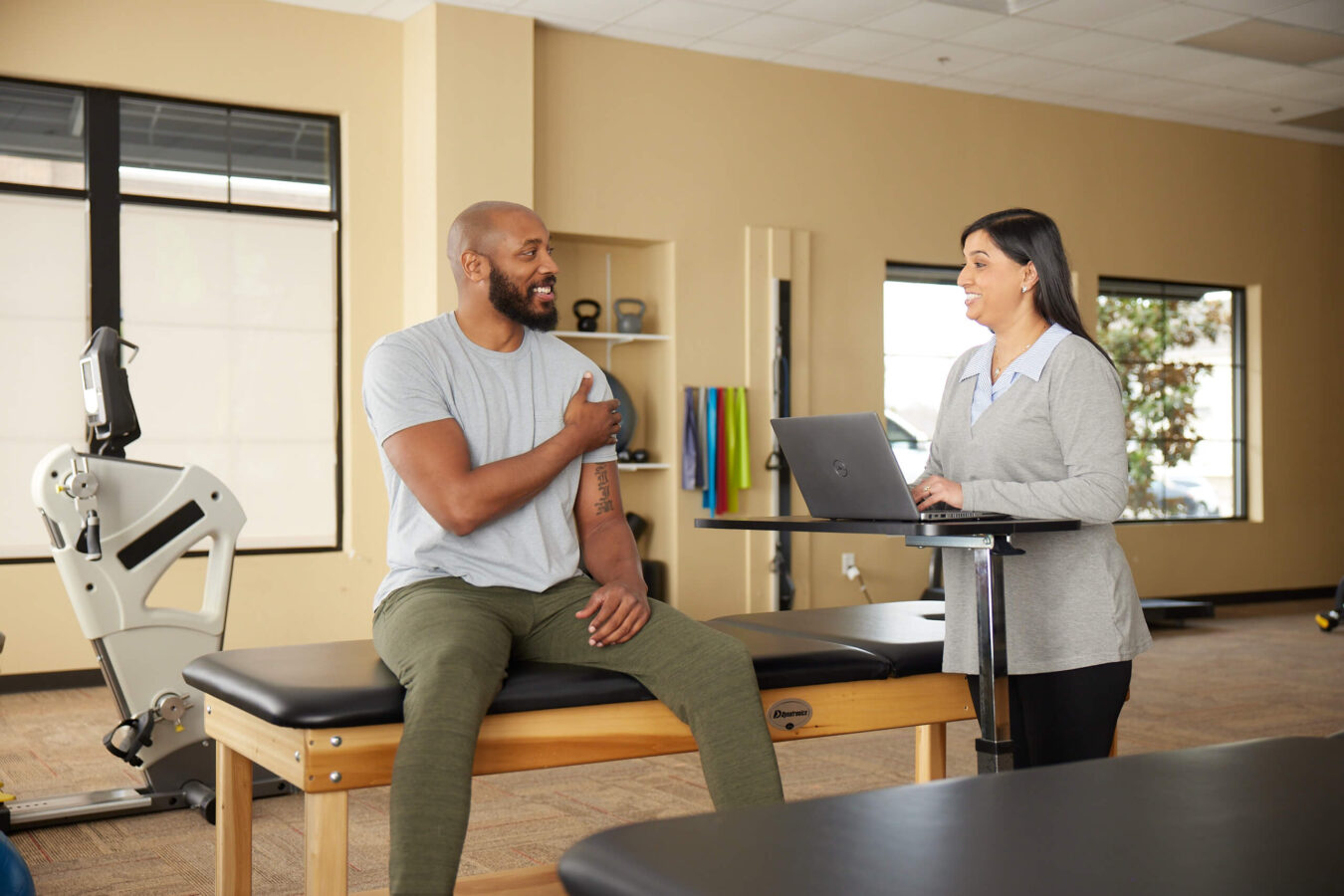
Medically reviewed by Misty Seidenburg
Scar tissue that develops after trauma to the body is a natural and unavoidable part of the healing process. However, over time, scar tissue buildup can be painful and impact movement and range of motion. Fortunately, there are a wide range of effective treatments to reduce scar tissue pain, tightness, and sensitivity.
An injury to the skin, muscles, tendons, ligaments, or bones triggers the body’s wound-healing response. This response helps to clean the injury site and bring in new cells that will form healthy tissue. During the last phases of wound healing, cells at the injury site quickly begin to multiply.
Some of these are collagen cells. Collagen is a protein that acts as a building block to support various tissues and structures throughout the body. It forms approximately 25-35% of the body’s protein content. While collagen cells are necessary to fortify the damaged area, they can also form in random patterns. When they overgrow, they can clump or ball up into tough scar tissue that is resistant to pulling and stretching.
Scars develop on the skin after cuts and burns. Damage to the muscles, ligaments, or tendons can also cause scar tissue to form. After surgery, scar tissue forms at the incision site and internally where tissues were severed or repaired. When a broken bone heals, scar tissue develops around the fracture. This is called a callus. This is a normal process for healing to occur.
There are several types of scars and they vary in size, shape, and color. Here are some examples:
Scars can also be caused by illness or diseases like chickenpox or scleroderma, or skin conditions like acne. These atrophic, or depressed, scars are often treated with topical creams and minimally-invasive cosmetic treatments designed to improve their appearance.
After it develops, scar tissue undergoes a process called ‘maturation,’ This is the time for the collagen in the tissue to remodel itself from a disorganized state to more of a smooth, mobile state. Exercise and movement are key to this process and the only method to create optimal healing. During remodeling, the body rebuilds the scar to become strong and flexible to be similar to the original, healthy tissue.
Remodeling helps the new tissue endure the force and stress the body typically experiences in the course of a day. Everyone is different, but remodeling generally takes 6-8 weeks to complete. Problems can occur when scar tissues doesn’t remodel correctly.
While many scars are painless, others can prevent proper mobility and range of motion near the injury site. Scars can be painful to the touch. Scars that are painful at rest may involve deeper nerve structures.
Because scar tissue is thicker and more fibrous than healthy tissue, it can hinder the function of nearby organs and tissues—to the point of deformity in more severe cases. Scars also have poor circulation, impeding the flow of oxygen and nutrients vital for healthy tissues and muscles.
Internal scar tissue overgrowth can cause pain, stiffness, itching, or numbness. Someone with adhesions may feel like they are pulling on internal structures, causing pain and tightness that often increases with certain movements. Adhesions near the joints can significantly impact function and mobility.
Research shows that scar tissue management with physical therapy modalities offers better results than scars left untreated. Scar tissue treatment has a few key goals. It promotes healthy remodeling to help collagen fibers realign normally and reduce the overgrowth of scar tissue.
Physical therapy offers a range of treatments and techniques to promote remodeling and break down tight, painful scar tissue after surgery or injury. These include:
Mild-to-moderate exercise increases circulation and improves range of motion. Targeted exercise also helps prevent and reduce scar tissue overgrowth. Stretching promotes proper remodeling and improves scar tissue flexibility. Physical therapists are trained to provide the correct dosage to promote healing and the strength of scars.
During ART, the physical therapist applies tension at the treatment site while instructing the patient to move from a shortened to a lengthened position. ART helps break up adhesions to retore unimpeded movement and restore soft tissue function.
Part of physical therapy is learning how to reinforce your efforts in the clinic to reach your scar management goals. Your therapist will teach you how to break up scar tissue safely and effectively through exercise, stretching, and massage at home.
Deep tissue massage and cross-friction massage are two manual therapies that improve mobility, promote healing, break up existing scar tissue, and help prevent it from forming. Scar tissue massage also helps with those aches and pains that develop when tight areas and adhesions impede healthy movement.
Moving and maneuvering affected tissue into different positions can help reduce pain, increase range of motion, and remodel scar tissue. Physical therapists use their hands, or apply specially-designed tools that can penetrate tissues more effectively. This is called instrument-assisted soft tissue mobilization (IASTM.)
For some patients, surgical scar revision may be medically-necessary to help the body to function properly. Some patients also have cosmetic scar revision to improve the look and feel of scars. Discuss your goals with your healthcare provider and physical therapist to determine the best course of care for you.
Physical therapy treatment programs vary depending on your symptoms and the age and location of scar tissue. An initial assessment is the first step to determine assess your scars and determine the best approach to improve your comfort, mobility, and quality of life.
Whether you are recovering from surgery, or healing from a recent injury physical therapy, scar management can make a positive difference in your outcome. Find a physical therapy clinic near you.
External Sources: